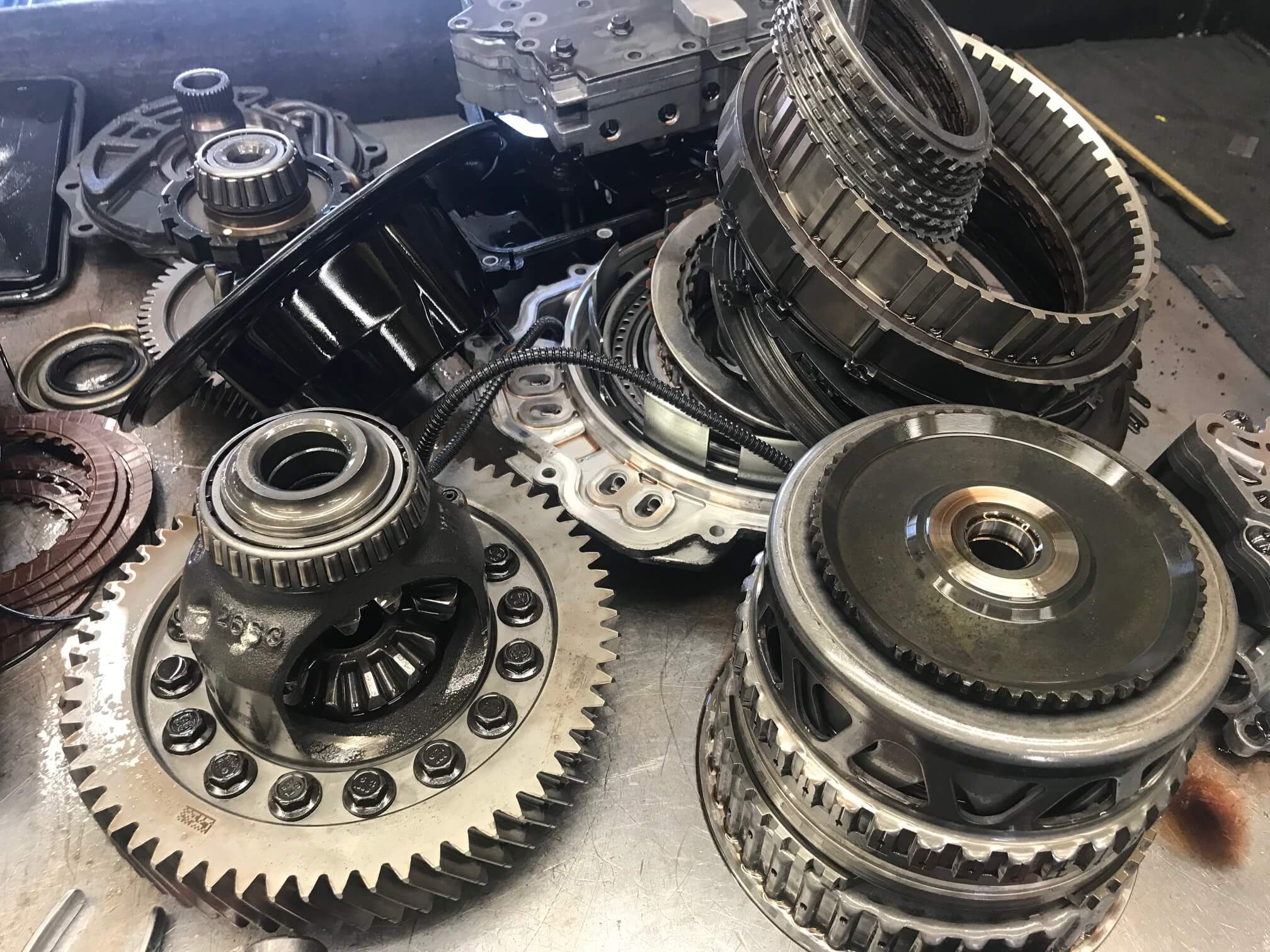An automatic transmission has a torque converter instead of the main clutch. The engine and transmission connect at the bell housing, which contains the torque converter for automatic transmissions, as opposed to a clutch for manual transmissions. The torque converter joins the engine and the transmission so the wheels will turn. Torque converters and clutches rely on clean transmission fluid delivered on time at the right pressure to shift gears and make the transmission perform efficiently.
In an automatic transmission, the wearing parts include clutch plates, bands, bushings, bearings, sealing rings, thrust washers, and other metal parts, all getting worn out due to friction. The most crucial component of those parts are the clutch plates. An automatic transmission does not use gears to propel the vehicle, it uses clutch plates. Each gear in an automatic transmission is comprised of three to six friction plates fitted in between smooth steel reaction plates. When you move the gear selector to drive or reverse, a valve opens and extreme hydraulic pressure moves a piston, compressing clutch plates together, resulting in vehicle movement. Each time the transmission shifts, the transmission computer opens another valve selecting the next gear, and on it goes.
Each time the clutch plates are pressed together they wear against the adjoining reaction plates. The more they are applied, the much faster they wear. The more a vehicle is used for stop and go driving, the more frequent the clutch plates are applied, thus the quicker they wear. The more weight a vehicle sets in motion, the harder the clutch plates must work and the quicker they wear. On the other hand, the more highway type driving and lighter the vehicle weight, the longer the clutch lasts.
Over time gears can wear out – especially if they have been running hot and inefficiently due to lack of or dirty worn out the transmission fluid. Slipping gears are typically due to normal wear and tear, which causes them to not engage properly and to slip in and out of sync. It is rare, but there might be a malfunctioning set of gears in the transmission, which is usually due to bad original manufacturing. Worn or rounded out gears do not properly link together so this can cause a bumpy shift and slippage as you accelerate and drive.
The symptoms you will feel as your transmission wears out depends on which part, or parts, start to wear out first. Since clutch plates are the parts that work the hardest and in essence make your vehicle move, it is common to experience gear slippage more often than other symptoms. A gear slippage happens when you feel your car or truck is not moving at the speed it should when pressing the gas pedal. Also, you may hear the engine grow louder and your RPM goes higher than normal while your speed is slower than normal. This symptom is the result of the friction lining on a set of clutches simply wearing off over the years and losing the ability to handle the weight of the vehicle. This typically happens between 120,000 and 170,000 miles. Highway driving generally helps your transmission last longer.
At Angel’s El Toro Transmission, honesty, integrity, and the quality of our work have been the foundation of our success. Your complete satisfaction will always be our main concern.
Angel’s Transmission and Auto Repair has been serving clients in Mission Viejo and nearby communities for over two decades. Our technicians are continuously training to stay updated on the latest information and technology. The skilled and certified technicians average 20 years of experience in the Automotive Repair Industry.
Call us at (949) 587-9060 for an appointment or fill out our contact form and let us help you with transmission repair services or general auto repair.


